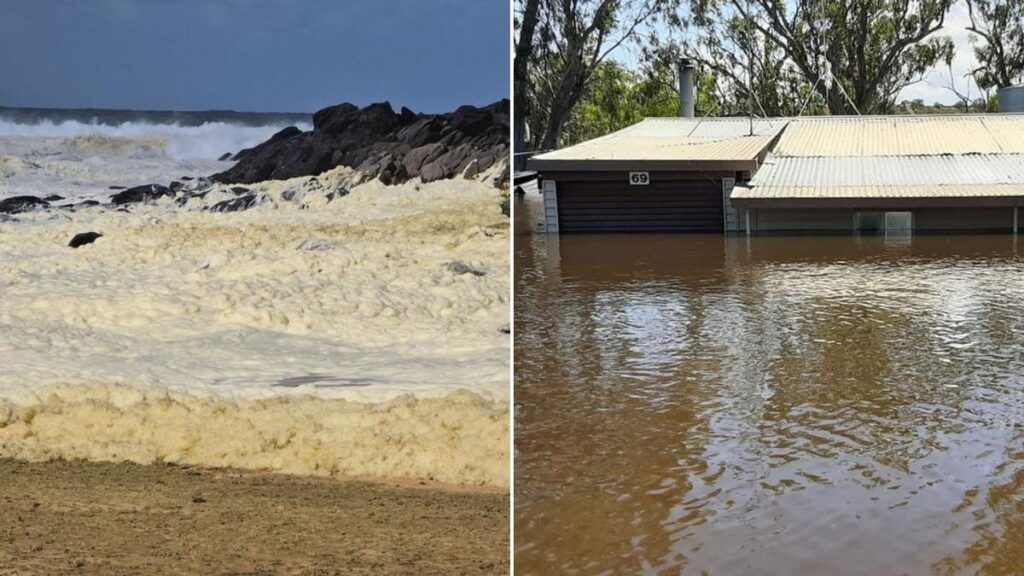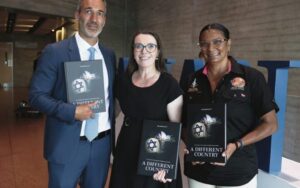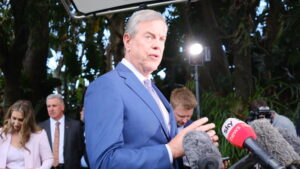
A toxic algae bloom that has devastated marine life along South Australia’s coastlines for over three months has prompted the state government to allocate $14 million for remediation efforts. The funding was announced by Murray Watt, the Federal Minister for the Environment, who emphasized the severity of the situation, describing it as an “environmental catastrophe.” Residents, particularly those in the fishing industry, are facing significant challenges as the Department of Environment and Water has stated that “nothing can be done” to mitigate the current bloom.
The algae bloom, primarily caused by the species karenia mikimotoi, has now spread over an area of approximately 4,500 square kilometers. Initially detected in March 2023 at Goolwa on the Fleurieu Peninsula, reports of sickness among surfers marked the onset of a troubling period for local marine ecosystems. The bloom has since proliferated along the coastline to Adelaide and as far north as Port Broughton, approximately 250 kilometers from its original site.
The South Australian government has attributed the bloom’s occurrence to three primary factors: nutrient runoff from extensive flooding of the River Murray, cold water upwelling, and unusually warm sea temperatures. These conditions have created an environment conducive to the rapid growth of harmful algae, leading to the death of thousands of fish and marine life. Reports of dead marine animals washing ashore have become increasingly common.
Authorities have highlighted that the nutrient influx from the River Murray floods has significantly contributed to the algae’s proliferation. With the flooding resulting in a peak of 186 gigalitres of water flowing into the river daily, the nutrients were funneled into coastal waters, creating a rich feeding ground for various algae species. This was further exacerbated by warmer than average water temperatures, which have made conditions ideal for the harmful algae to thrive.
The fishing industry is particularly impacted, with local fishermen expressing deep concern over the long-term effects of the bloom. Glen Hill, owner of Coorong Wild Seafood, shared his distress, stating, “If we lose the bottom of the food chain, what do the fish eat? Potentially, we could lose everything.” As a result, seafood sales have plummeted as consumers grow wary of the origin of their produce, prompting several oyster and mussel farms to halt operations.
Despite the dire situation, government agencies, including the Department of Environment and Water (DEW) and the Environment Protection Authority (EPA), are actively monitoring the algae bloom. Weekly water sampling is being conducted at multiple sites to better understand the bloom’s movement and impact. DEW has reinforced that while immediate measures are being taken, the situation remains fluid, and they are assessing future strategies to manage water quality and mitigate the effects of such blooms.
In response to the economic fallout, the South Australian government has introduced an initial relief package of $500,000 for affected fishers, waiving specific licence and audit fees. Despite calls from the Liberal Opposition for a royal commission to investigate the algae bloom, Attorney-General Kyam Maher dismissed the proposal, citing the scientific consensus linking the bloom to climate change.
The current situation has reignited discussions about the broader implications of climate change on marine ecosystems. Faith Coleman, co-founder of the Coorong Environmental Trust, highlighted the need for a balanced approach to environmental management, stating, “If we get the balance wrong in the environment, all of it will fall over.”
As the South Australian government continues to navigate this crisis, the focus remains on restoring marine health and supporting the local fishing community while preparing for potential future blooms. The impacts of this event are expected to resonate beyond the immediate coastline, emphasizing the interconnectedness of ecosystems and human activity in the face of climate change.







